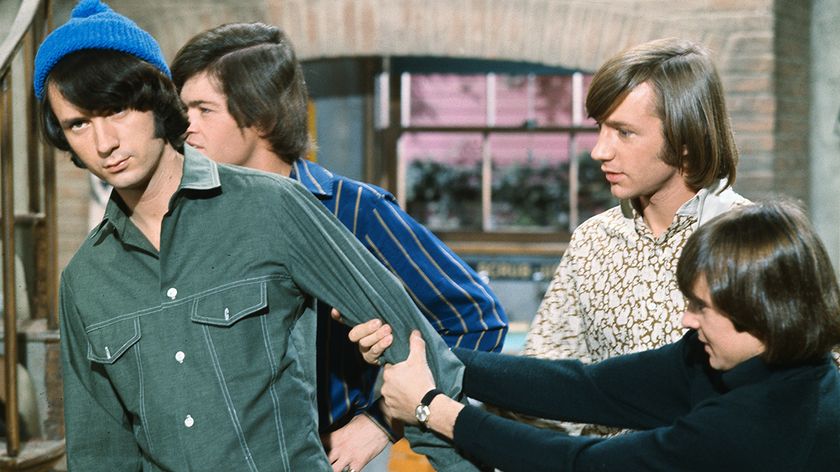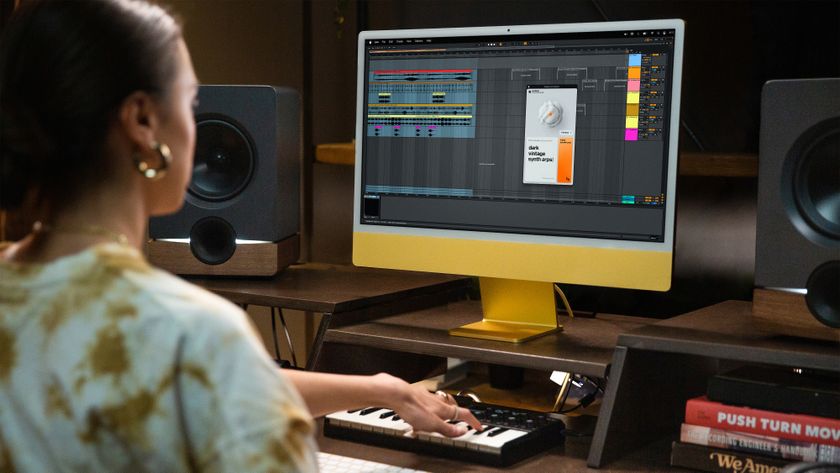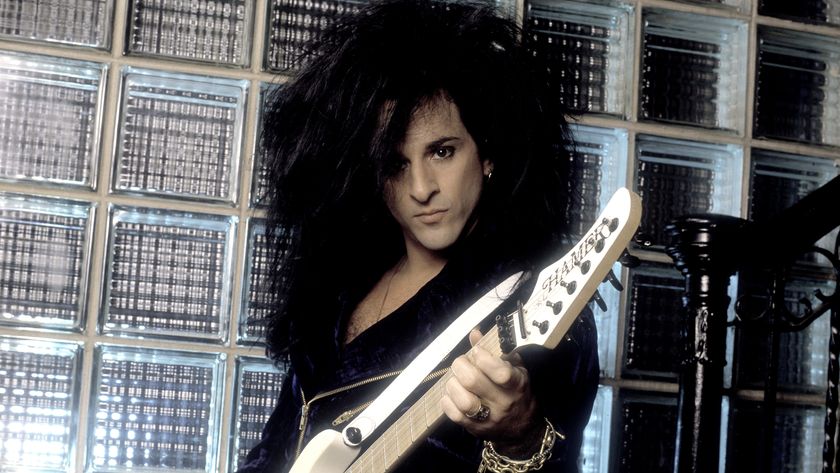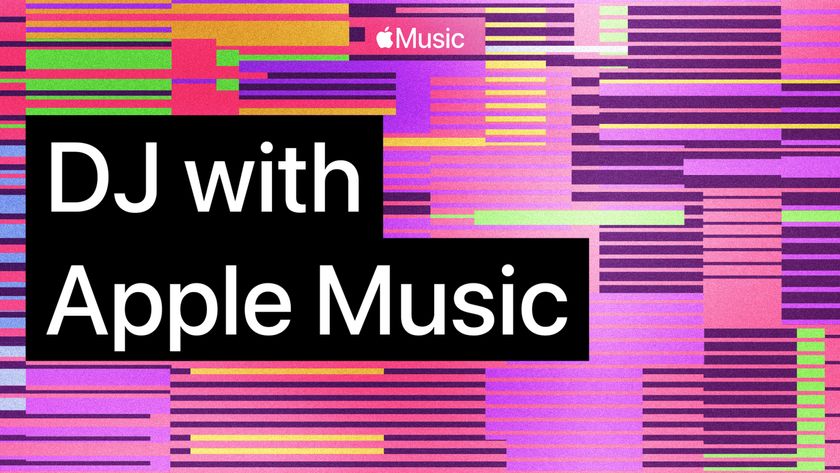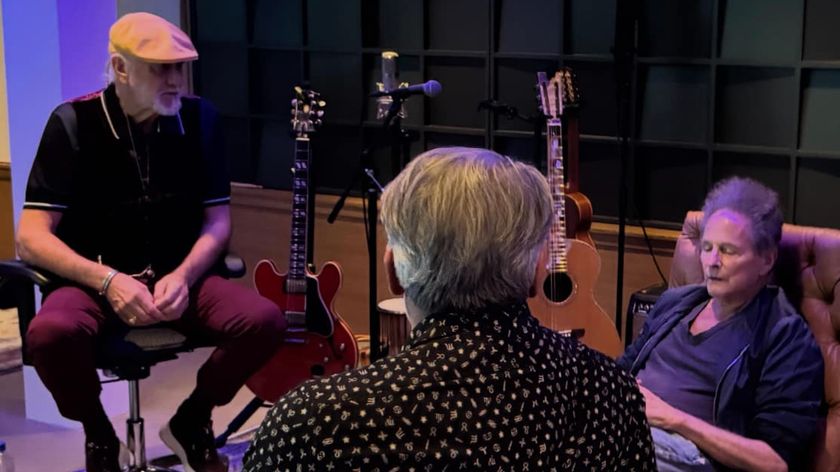Kenny Wayne Shepherd: “A Hardtail Strat is more appealing to me than one with a vibrato - it rings so true”
KWS talks tone secrets and working with the elusive Alexander Dumble
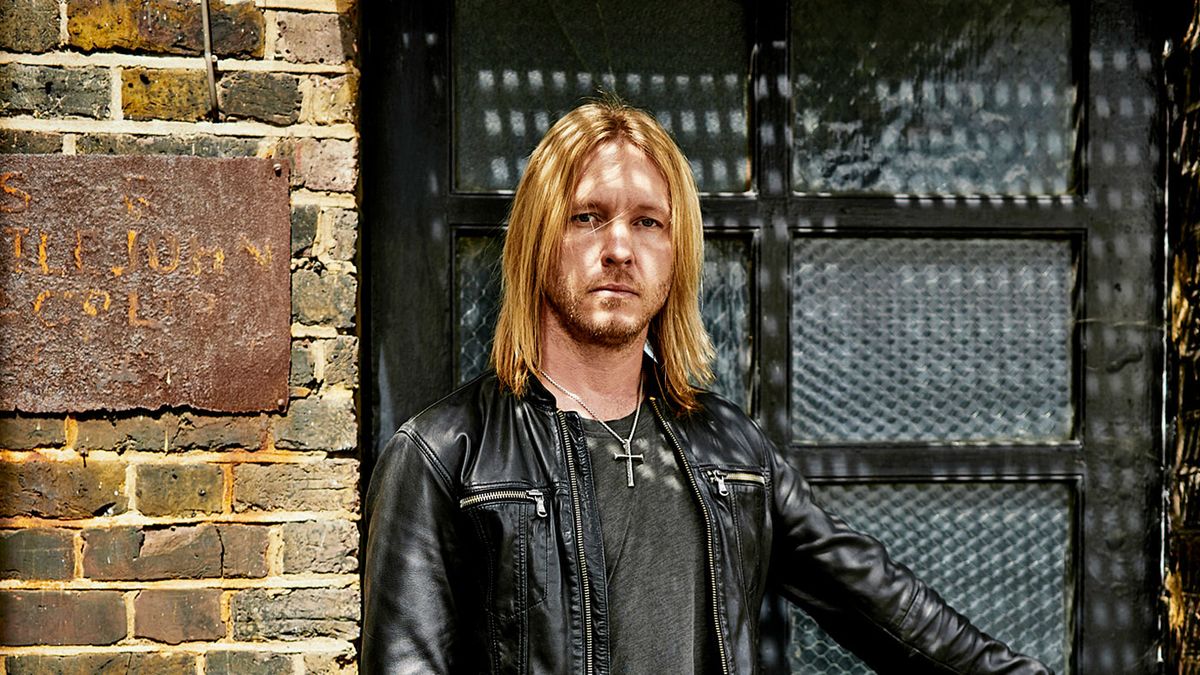
A protégé of BB King, jamming partner with Alexander Dumble and bandmate of Stephen Stills, the Louisiana-born bluesman has just released a gutsy new album, Lay It On Down. We joined Kenny to talk about Dumble-modded Fuzz Faces, the essence of a great Strat, and learn some of his blues soloing strategies.
“One of the hardest things to do, I think, in today’s world is to write an authentic-sounding blues song lyrically,” Kenny Wayne Shepherd observes as we sit down to a coffee at John Henry’s rehearsal rooms in London, where Fender keeps an office.
Once a blond wunderkind of the blues scene, Kenny has matured into a thoughtful player with prodigious chops and a surefooted melodic instinct that has seen him praised by no less authorities than the late BB King and Stephen Stills.
I grew up listening to hit songs on the radio. Having a great vocal melody and a great lyric has always been, to me, equally as important as the guitar playing
“If the lyrics and the story that you’re telling are authentic and you’re not sacrificing the quality of the message that you’re trying to convey to the listener, then I think that keeps the whole thing authentic,” Kenny adds.
“My band is about the guitar. It’s guitar-based music, but because I grew up in a radio environment with my dad, I grew up listening to hit songs on the radio. Having a great vocal melody and a great lyric has always been, to me, equally as important as the guitar playing on the record - even if I wasn’t doing the singing - because that’s just what I grew up around. And I also think those are the songs that people will end up remembering for the rest of time.”
Seated among racks of Strats and Teles, naturally the conversation turns to gear - as well as being a very fine player, Kenny has great ears, too, so before we embark on an illuminating one-to-one soloing lesson with him, it’s time to do what guitarists naturally do in such surroundings - and talk guitars.
What gear did you bring into the studio for the album?
Get the MusicRadar Newsletter
Want all the hottest music and gear news, reviews, deals, features and more, direct to your inbox? Sign up here.
“Well, I brought a lot of stuff into the studio. Over the years, my sound has evolved. We’ve tried a number of different things on this record. I used a combination of various guitars. Some songs I was playing a Les Paul for the solo and a Strat for the rhythm. On one song, I would double the guitar track but do one on a Les Paul and one on a Strat to get a really full sound. One dirty, one clean, things like that.
I think if you start running seven or eight amps at once, it’s not necessary. Especially if you’ve got great-sounding equipment
“Also, over the past, I guess, five to seven years, Alexander Dumble has been building amps for me. They’ve just exceeded anything that I have ever had prior to that. I’ve essentially found my core sound, as far as amplifiers go, are these amps that he’s built for me. I lined up about seven of them in the studio. We would do different combinations of those various amplifiers, but usually no more than three amplifiers at a time.
“I think if you start running seven or eight amps at once, it’s not necessary. Especially if you’ve got great-sounding equipment. So yes, Strats: vintage, newer stuff… Gibson: I used the Firebird; I used my Les Pauls. My grandfather gave me a Les Paul that I think is a late 70s model. Then I have a Custom Shop one, from around 2000 I think, that I used heavily. I really love that guitar.

Kenny Wayne Shepherd: the 10 blues guitarists that blew my mind
“They sent me one of the new Les Paul Axcess guitars, which is pretty interesting. It felt a little more familiar because it’s lighter and it has the ability to split the pickups and things like that. Then my Strats. I have my ’61 Strat, ’59 Hardtail, ’58 Hardtail and various Signature series models that I have with Fender and Custom Shop guitars and stuff. Really just trying to pick the right instrument to get the right sound for the right track.”
Hardtail it
What’s the specific appeal of a Hardtail Strat to you?
“People should try the Hardtail - the Hardtail is actually a more appealing guitar to me [than a vibrato-equipped Strat]. I like having the tremolo for the various moments in the show where it’s necessary to create an effect or a sound. I’m not like Jeff Beck, for example, who utilises the tremolo on a very consistent basis throughout his performance. I use it here and there - maybe six times throughout an entire two-hour-long show. It’s an effect.
Those hardtail guitars ring so true. Even when they’re not plugged in, they are still more resonant
“But the Hardtails… those guitars ring so true. Even when they’re not plugged in, they are still more resonant. They’re louder in an acoustic setting because the strings are running straight through the body. That bridge piece is just connected straight to the body; there’s no air or space in between it. I just think you’ve got a more bell-like true Stratocaster sound with that instrument. They work great for me.
“Sometimes you can get a little more tension on the neck. I use heavy strings, so you can feel the tension a little more on a guitar like that, but I think it’s actually a really great sound. I don’t know why people don’t try those more. Because I think if they would - if they did - especially if they had another Strat that does have a tremolo, then they’d probably end up buying the Hardtail.”
A certain mythical aura surrounds Dumble amps. You’ve played quite a few - is the reputation justified?
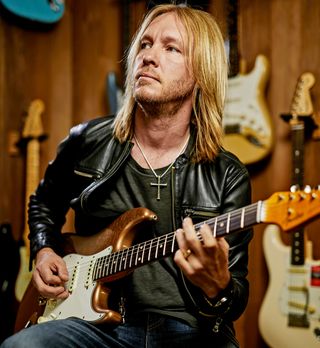
“The key word is inspiration. I’m not speaking to you as a person who has bought into some hype. I’m speaking to you as a person who has legitimate experience before and after. Quite literally, those amps, the point behind the amps that he has built for me and what they do is inspiring. It’s inspiring me to play new things. Inspiring me to take different avenues and create new sounds. The way that he goes about doing that is what you’ve probably heard. I mean, he literally tailor-makes the amp around the musician’s style of playing and approach.
“I would go over. I see him on a really regular basis. I’ll sit around and we’ll hang out. I’ll sit around just like this, me and you, and be playing guitar for hours and hours. The whole time he’s listening. He’s got great ears. I mean, obviously. He hears how a person plays. He knows what it is that I’m trying to get out of the amplifier. He hears how hard I play, the attack that I use, the touch. All of it. You can tell his mind is working the whole time. He’s just listening.
“Then he goes and he works on the amp. Then you come back, you play it again and we see how it’s responding. Then he further refines it if necessary. Usually, in my experience, it’s not been necessary. I go back. I plug in the first time and it’s right, which I think is one of the reasons why he’s always been adamant that those amps that he builds are for that person. He’s built it around my style of playing. In theory, if anyone else was to be playing through my amp, it naturally would not necessarily respond the way that it was intended to because it’s a different person playing.”
Finding headroom
What degree of headroom and power do you tend to prefer in your amps?
“You know, I used to play three Twins all turned all the way up. It was monstrous. Those amps are so clean. I’ve had Electro- Voice speakers in there. They weighed a ton, but [were] super-clean and punchy. As I’ve gotten older, man, it’s just not that necessary to be so loud. All the amps that I’ve worked on with [Dumble] have been 50 watts and below. I mean, there are times when I’ve been on stage and I’ve used a little 15-watt Deluxe that he’s built for me, not as my primary amp but in conjunction with another amp, you know.
Guitar guys love to see a bunch of amps, really big amps, but it actually isn’t the point behind larger amps
“I just think that it’s not necessary. When you go back and you hear a lot of the largest guitar sounds in the studio where you hear a guy and you’re like, ‘Oh my gosh, that’s amazing’ - you imagine it’s all these Marshall stacks and this big, massive thing. It was really, like, a Fender Champ or a little Deluxe. That’s what got the huge sound.
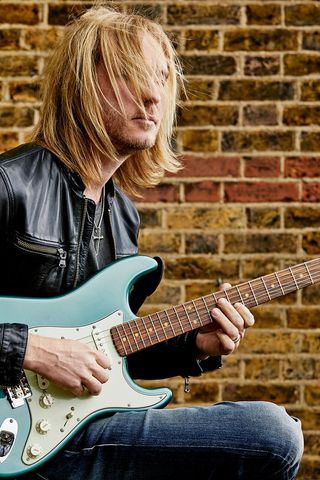
“When you actually realise that that is the truth, then it’s, like, the only reason to have a louder amp is so that people can hear you if you’re in a bigger place. Then that was before PA systems existed. They wanted louder amplifiers because they weren’t mic’ing all this stuff and putting it through a PA system. Only the vocal was going through the PA system. It’s not necessary. It’s a visual thing.
“Guitar guys love to see a bunch of amps, really big amps, but it actually isn’t the point behind larger amps. That original point was because they weren’t putting that instrument through the PA system.”
You’re probably best known as a Strat guy - so what, for you, is the essence of a great Strat?
“Well, to me, I’ve found over the years that my favourite consistent wood for the body is alder. I think across the board most people prefer alder. I have some ash-bodied guitars that sound great, too, but different. But I’ve just always gone back to an alder body. In terms of fretboards, I have a couple of vintage maple Strats that I really enjoy, but I always tend to go back to rosewood.
“I use jumbo frets, like, 6100 - almost like bass frets. I play heavier strings. I find that in order to really be able to have a sure grip on the string to do a huge bend, then you need to be able to have chunkier fretwire. If you’re using vintage-style fretwire, it’s a losing battle.
We did my own custom wound pickups for my Signature Strat. We developed the sound of those pickups for a year
“We did my own custom wound pickups for my Signature Strat. We developed the sound of those pickups for a year and a half and I think they sound pretty fantastic. I go for a relatively hot pickup: they measure around 8/8.5 [kohm] output, but not so hot that it muddies up the sound. I want it to be really clear and punchy.
“I mean, those are the fundamentals - but I also use Graph Tech saddles. I have since I was very young. It’s another example of ‘it’s not me just endorsing some product so that I can have my picture on an advertisement’. It’s, like, I genuinely was having a string breakage problem. I was looking for a solution and somebody said, ‘Hey, have you heard of these graphite saddles?’ To me, it sounded a little suspect because it was, ‘I’m putting this on a 1961 Strat.’ At the time it was cutting-edge technology. I’m like, ‘I don’t know about this…’ but I put those saddles on that ’61 Strat and stopped breaking strings immediately. From that point forward, I’ve put them on all my guitars including my Signature Strat.”
Fuzz facts
Did it make much of a difference tonally?
“Slightly, but it’s very minimal. Most people say that it brightens it up a little bit. I mean, at a certain point, you’re splitting hairs. There are far larger contributors to the tone than swapping out saddles. You’re really trying to hear a difference at that point.”
Strats and Fuzz Faces are a classic pairing, but it’s notoriously difficult to get a consistently good fuzz tone. How do you approach the problem?
Alexander Dumble’s had my Fuzz Face for a few months. He’s going to be doing some supersecret special thing to it
“I’ll use it in the studio, but I have found it very difficult to use it live. One thing that I will tell you is I have an original late 1969 grey-silver Fuzz Face. It needed a repair done to it. Actually, [Alexander Dumble] asked me one day, ‘Do you have any Fuzz Faces, original ones?’ I said, ‘Yes. As a matter of fact, I do.’ He’s like, ‘Bring it to me. I know what to do with it.’ He’s had it for a few months. He’s going to be doing some supersecret special thing to it and I’m assuming it’s going to sound incredible. I’ve never heard of a Dumble-ised Fuzz Face before. We’ll see how that sounds.
“Anyway, the Fuzz Face is a peculiar, simple animal. It’s complicated because in the studio it’s a more controlled environment; you can really fine-tune it for the studio. But in a live setting, I’ve found that, for my ear, it’s too difficult to go from a sound that I have with a Tube Screamer or the King Of Tone pedal and then switch to the Fuzz Face because it darkens the sound so much. To me, it’s such a drastic sonic change that it throws me off.
“If fuzz was my primary overdrive effect that I used 98 per cent of the time, then that would be one thing, but if I’m just trying to throw it in there for a moment or on one song, it’s such a drastic change in a live setting that it really is difficult for me.”
What popular myths relating to tone have you come to doubt over the years?
I don’t necessarily subscribe to the view that vintage is always better. You should look at all instruments on an individual basis
“It’s not a complete myth, but I don’t necessarily subscribe to the view that vintage is always better. I think you should look at all instruments, whether they’re amplifiers or guitars, on an individual basis. Don’t pay any attention to the number, the year that it was made or the price tag on the guitar. I’ve played plenty of vintage Strats and plenty of vintage amps that sound like shit. I mean, like, horrible amps. They’re just worn out, not properly maintained. Probably never sounded right the year they were built. Factory issues, you know, whatever it is. Inconsistencies in the parts.
“Same with the guitars. If you didn’t know the price of the guitar and nobody ever told you the year that it was manufactured and you could just base it all purely on your eyes being closed and the way it feels, the sense of touch and the sense of sound… that’s all you really need to know.”
Kenny Wayne Shepherd’s new album, Lay It On Down, is out now on Provogue/Mascot.

Jamie Dickson is Editor-in-Chief of Guitarist magazine, Britain's best-selling and longest-running monthly for guitar players. He started his career at the Daily Telegraph in London, where his first assignment was interviewing blue-eyed soul legend Robert Palmer, going on to become a full-time author on music, writing for benchmark references such as 1001 Albums You Must Hear Before You Die and Dorling Kindersley's How To Play Guitar Step By Step. He joined Guitarist in 2011 and since then it has been his privilege to interview everyone from B.B. King to St. Vincent for Guitarist's readers, while sharing insights into scores of historic guitars, from Rory Gallagher's '61 Strat to the first Martin D-28 ever made.
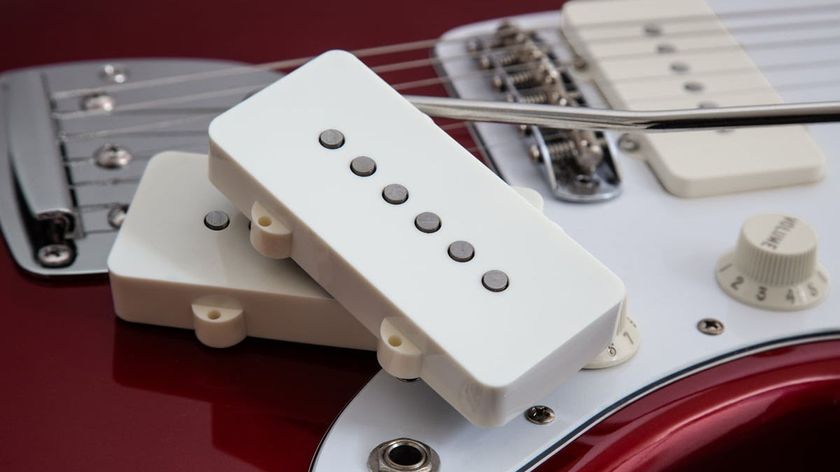
“Under the cover is a new hum-cancelling technology that preserves that single-coil Jazzmaster tone with no noise”: Seymour Duncan unveils the Jazzmaster Silencer, drop-in pickups to soup up your offset
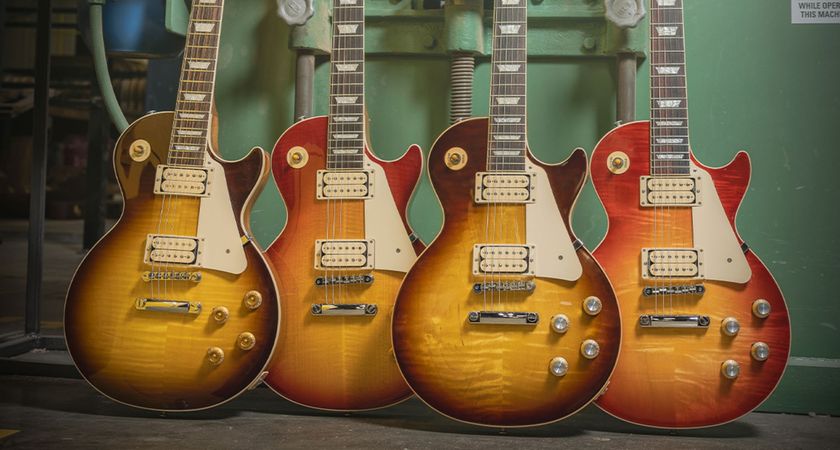
“This is a really fun limited run with some really important history behind it”: Gibson’s Les Paul Standard Double Trouble is a limited edition model for that ’59/’60 Golden Era vintage vibe



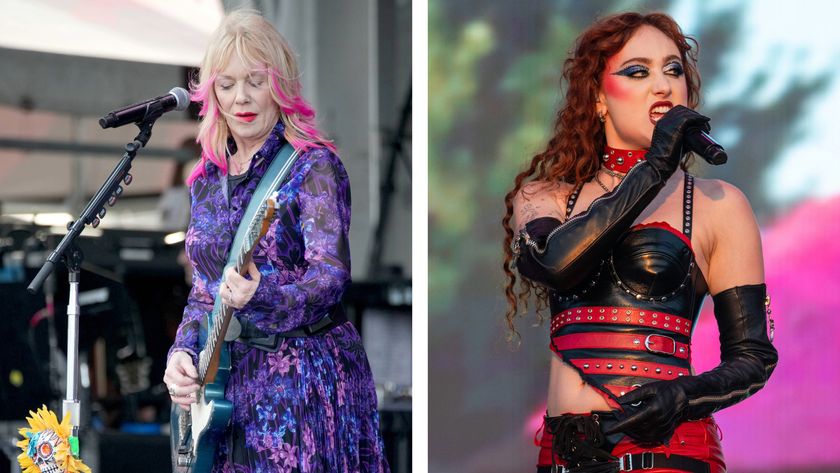
![Justin Hawkins [left] of the Darkness plays an open G on his offset electric and closes his eyes as he performs onstage; soul-reggae icon Johnny Nash [right] frets a chord on his acoustic and wears a patched denim jacket.](https://cdn.mos.cms.futurecdn.net/hWzCjD9ZWQiPPjMtTWiFfa-840-80.jpg)

